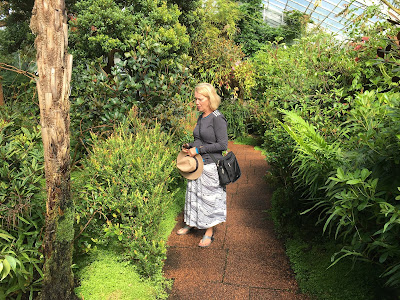Drills are an important part of
swimming training. In swimming drills consist of breaking swimming down into distinct
parts. With a kickboard you give the
legs an extra hard work out and the arms a rest. With a pull-buoy you can rest
the legs and just exercise the arms. There are other drills when you just
exercise one side at a time. In swimming there are other drills specifically
aimed at improving technique. Drills are
an integral part of swimming training.
In running drills are virtually
ignored. It is easy to go for a run and feel that you have done your training.
In a swimming pool it is harder to swim a few laps and have the same feeling.
I have asked my friend Mr Goggle what he thinks of drills.
Mr G says running drills:
Mr G says running drills:
Strengthen key leg muscles. Strengthen not only the muscles, but the specific joints
(like the ankle)
Improve the gait.
Improve
communication between head and legs. Neuro-muscular co-ordination.
Improve
mindfulness of good running technique.
Improve
coordination, agility, balance, and proprioception.
Serve
as a great warm-up before challenging workouts or races.
And
my bottom line is running drills improve my running. I run well, my legs seem
to be looser, more coordinated, better balanced, more agile, better able to cope
with obstacles on the track or sudden changes in the track. They seem to help jumps events and the
hurdles.
I
feel less likely to get an injury and feel like I am running faster. The
running is more enjoyable. Less plodding. More lightness. I have no proof or
evidence of anything. All I say is try a few drills. You might like them. They
might help you.
How
often should you do them? I am not training for world records. I do them when I
feel like it. I try for a few drills every time I run. Some days I manage
more. I have a routine where I normally do
them in the same order. On a good day I do the routine twice or three times. I
normally do them before an aerobic run. I find them more tiring than a steady
aerobic run.
If
you have had an injury then certain drills may be beneficial of harmful. Be
aware that previous injuries may influence which drills are good or bad for
you.
Normally
I do my drills on the DAC or on a local grass soccer field.
And the drills are:
Skipping
Mr G says: skipping
increases stride length and knee lift, improves lower-leg strength promoting an efficient midfoot to forefoot strike. And
improves balance.
I skip forward
raising my leading knee as high as possible. I pump my arms as I do when
running but in a more exaggerated fashion.
I find this very
enjoyable. It feels like it is helping with my balance and rhythm. It feels
good and I recommend it. If you have a spare moment try a bit of skipping.
Carioca
Mr G says: carioca
aids the glutes, abductors, and hips while
improving lateral mobility, stability, and coordination. Carioca lessen your ground contact
time and give you a quicker, more efficient turnover.
Move sideways to
the left swinging the right leg across in front of the left leg and then behind
your left leg. Alternate between swings the right leg in front of and behind
you. After a short period change over. Move right with right leg now leading
with left leg alternating between swinging in front of and behind you. Arms
high and out of way.
My experience is
that carioca is confusing and can be stressful on the knees. I am not very fond
of this drill.
Backward running
Mr G says: improves the glutes and
upper hamstrings and general speed and efficiency. My experience is that
running backwards is very helpful. It seems to help balance, co-ordination and
all the right muscles. I am definitely a big fan of backwards running.
Butt
kicks
Mr G says: run with short strides and try to bring your
heel under your butt with each stride. I run slowly and try to raise my foot as
high behind me towards butt as possible.
My experience is that this is very tiring. My experience is that this is
exercising muscles I don’t normally use. Therefore it must be helping me.
Straight leg
Mr G says: running
with straight legs promotes quick leg turnover and improved coordination.
Keep
legs straight, run forward, land on midfoot, no high lift of feet. As quick a
turnover as possible.
My
experience is that this is not very useful or enjoyable.
High
knees
Mr
G says: run on the spot with fast strides, lifting knees high. Improves all leg muscles, promotes high knee
lift and increasing leg speed.
My
experience is that this works. To run on the spot helps. It is a good drill.
Bounding
Lunge forward on
one leg. The leading leg is bent while
trailing leg is straight. Hold the lunge position for about 1 second.
I find the only way
to do this is very slowly at walking speed. To slowly lunge forward from leg to
leg. Not very enjoyable or useful.
Hopping/jumping
Mr G says:
strengthens all muscles.
I say it helps a
lot. It improves coordination and balance and strengthens muscles and tendons.
One of my favourite drills. I interrupt my running with a few meters of hopping
or jumping. Either single leg hops or double leg jumps. With the double leg
jumps I feel that the takeoff or jump is good. And that the vibrations from the
landing are bad.











